CALL:
609-698-3424
or
732-244-4015
FAX:
609-698-4228 |
LICENSED AND INSURED
NEW JERSEY STATE
REGISTRATION NUMBER 95889A

|
|
 |
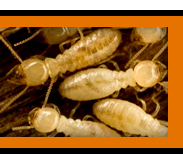 |

Termites live in colonies that, at maturity, number from several hundred to several million individuals. Termites are widely known as an economically significant pest that can cause serious structural damage to buildings, crops or plantation forests. Their habit of remaining concealed often results in their presence being undetected until the timbers are severely damaged and exhibit surface changes. Once termites have entered a building, they do not limit themselves to wood; they also damage paper, cloth, carpets, and other cellulosic materials. When termites have already penetrated a building, the first action is usually to destroy the colony with insecticides. Regular inspection by a competent, trained and experienced inspector is the best defense.
|
|
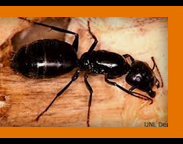 |

Carpenter Ants are large wood-destroying ants indigenous to many parts of the world. They prefer dead, damp wood in which to build nests. Sometimes carpenter ants will hollow out sections of trees. The most likely species to be infesting a house in the United States is the Black Carpenter Ant (shown). Carpenter ants can damage wood used in the construction of buildings. They can leave a sawdust like material behind that provides clues to nesting location.
|
|
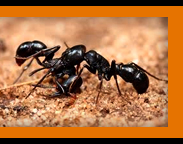 |

Ants form colonies that range in size from a few dozen to millions. Their ability to exploit resources brings them into conflict with humans, as they can damage crops and invade buildings. They carefully select their nest sites and will avoid sites with dead ants, as these may indicate the presence of threats or disease. They are quick to abandon established nests at the first sign of threats. Populations are controlled using insecticide baits, either in granule or liquid formulations. Bait is gathered by the ants as food and brought back to the nest where the poison is inadvertently spread to other colony members. Boric acid and borax are often used as insecticides that are relatively safe for humans.
|
|
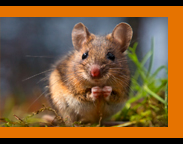 |

Mice can at times be harmful rodents, damaging and eating crops, causing structural damage and spreading diseases through parasites and feces. In North America, breathing dust that has come in contact with mouse excrement has been linked to hantavirus, which may lead to Hantavirus Pulmonary Syndrome (HPS). Baiting procedures are commonly used as an effective rodenticide. An effective rodenticide must be tasteless and odorless in lethal concentrations, and have a delayed effect. This is because mice will often taste a small amount of the bait and then continue eating if they do not get sick.
|
|
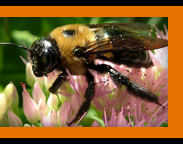 |

Carpenter Bees are large, hairy bees that get their name comes from the fact that nearly all species build their nests, or burrows, in dead wood or structural timbers. Male bees are often seen hovering near nests, and will approach nearby animals and people—however, males are harmless since they do not have a stinger. Female bees do have a stinger, but are not aggressive, and will not sting unless directly provoked. Carpenter bees make nests by tunneling into wood, vibrating their bodies as they rasp their mandibles against the wood. Each nest has a single entrance which may have many adjacent tunnels. The entrance often is a perfectly circular hole.
|
|
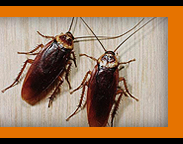 |

Cockroaches adapt readily to a variety of environments, but prefer warm conditions found within buildings. Cockroaches leave chemical trails in their feces as well as emitting airborne pheromones, which other cockroaches will follow to discover sources of food and water. They are among the hardiest insects on the planet—some species are capable of remaining active for a month without food and are able to survive on limited resources like the glue from the back of postage stamps. Some can go without air for 45 minutes. They can also passively transport microbes on their body surfaces, including those that are potentially dangerous to humans. Cockroaches have been shown to be linked with allergic reactions in humans, such as asthma.
|
|
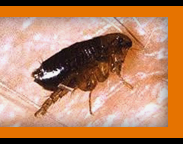 |

Fleas are external parasites that live off the blood of mammals. They lay 500+ eggs over their life, allowing for phenomenal growth rates. Flea bites cause an itching sensation and some people and animals suffer allergic reactions to flea saliva, resulting in rashes. Bites generally result in the formation of a slightly-raised swollen itching spot with a single puncture point at the center and often appear in clusters that can remain itchy and inflamed for up to several weeks. They can also lead to hair loss as a result of frequent scratching and can cause anemia in extreme cases. Fleas can also act as a vector for disease, transmitting between rodents and humans by carrying Yersinia pestis bacteria (bubonic plague), endemic typhus fever, and in some cases tapeworm.
|
|
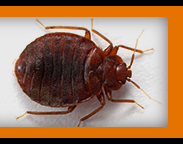 |

Bedbugs are small, elusive, and parasitic insects that live strictly by feeding on the blood of humans and other warm-blooded animals. The name 'bedbug' is derived from the insect's preferred habitat infesting houses, especially beds or other common areas where people may sleep. Bedbugs are mainly active at night and are capable of feeding unnoticed on their hosts. Most observed bites consist of a raised red bump or flat welt, and are often accompanied by very intense itching. The red mark is the result of an allergic reaction to the anesthetic contained in the bedbug's saliva. Reactions to bedbug bites may appear indistinguishable from mosquito bites, although they tend to last for longer periods. Bites may not become immediately visible and can take up to nine days to appear.
|
|
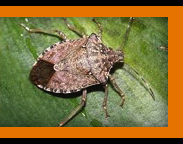 |

Stink Bugs, also known as "Shield Bugs," have glands in their thorax between the first and second pair of legs which produce a foul smelling liquid. This liquid is used defensively to deter potential predators and is sometimes released when the bugs are handled carelessly. The nymphs, similar to adults except smaller and without wings, also have stink glands. Although they are harmless to humans, when they group in large numbers they can become significant pests. They are seen typically in late summer through fall, and come in many color varieties including brown, black, green, and red (some look like ladybugs).
|
|
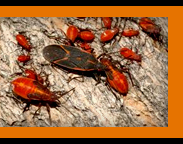 |

Box Elder Bugs are about ½ inch long with a dark brown or black coloration, relieved by red wing veins and markings on the abdomen. In autumn, they can become household pests by seeking winter hibernation locations and find their way into buildings through crevices. They remain inactive inside the walls and behind siding while the weather is cool. When the heating systems revive them, they begin to enter inhabited parts of the buildings. In the spring, the bugs leave their winter hibernation locations to lay eggs on maple or ash trees. Groups of 50-200+ bugs may gather on house siding or brick, usually in a sunny spot. Insecticides have been proven to be very effective in killing these bugs.
|
|
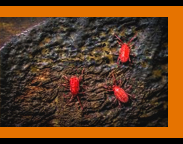 |

Clover Mites and other types of mites can become a nuisance in and around houses. They generally enter houses close to thick vegetation and can infiltrate houses in very large numbers through cracks and small openings around windows and doors. Whether inside or outside, clover mites are found more commonly in sunny areas than in darker areas. Chemical control of mites generally involves pesticides that are specifically developed for mite control. Because most miticides do not affect eggs, a repeat application is usually needed for control. Since an egg can develop into a mature mite able to lay eggs of its own in as little as 9 days, more frequent application may be required in hot, dry conditions.
|
|
|






















